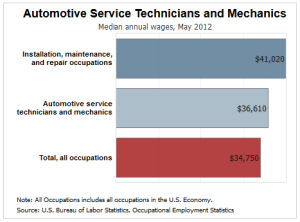
There are some parts of your vehicle that need to be replaced. These parts include the starter motor, alternator and sensor. If you know how to repair these parts, you can make the repairs yourself within a short period of time. You will need to follow the instructions provided in your vehicle’s repair manual. Tools may be required. To ensure that you understand the steps, read the manual. These repairs are easy to perform.
Check engine light
Don't ignore a Check Engine Light (CEL), if it is on in your car. Even though it might seem harmless, the warning light could cause serious damage if not treated correctly. This is especially true when the warning light remains on for the entire trip. This could signal a more serious issue that may lead to the car becoming stuck. In the end, it is important to have your vehicle checked out by a certified technician.

Headlights
Headlights are one the most neglected parts in a vehicle. Over the years, the light bulbs in these bulbs may start to fade and may even cause your field of vision to be uneven. An uneven field can result from replacing just one of the headlight bulbs. This can distract drivers. An employee from a car maintenance shop can advise you on the best way to replace your bulb. Here are some tips on how to maintain your headlights.
Tire pressure light
You should have your tires pressure checked by a professional if you see the light on your dashboard. There are several ways to maintain the proper pressure in your tires. You can find more information in the owner's guide. Your vehicle's manufacturer recommended PSI can be found on the sticker placed inside the driver’s door jamb. If the light doesn't go out, check the air pressure of all tires to ensure that all tires are at the proper PSI.
Oil change
Regular oil changes are an important part in regular car maintenance. It can improve the performance of your vehicle and protect it against breakdowns. Different car models require different types of motor oil and it's important to find out which one is best for your model. Also, it will ensure that all other parts of your vehicle are taken care of by getting your oil changed at a professional.
Power steering fluid
Your power steering fluid can deteriorate over time and might need to be replaced. You can easily check it if you take the time and inspect the car thoroughly. A dipstick may contain "Min" and "Max" lines, indicating the correct levels. Next, remove any fluid from the dipstick by wiping it clean before reinstalling it. This may take a while, but it will help to ensure your steering works properly.

Tune-up
While you may think your vehicle's tune-up is a simple process of lubrication, there are other things you need to check. Most vehicles use a variety of hoses and belts that can be in need of replacement. Technicians can inspect the brakes and replace rotors or pads as needed. Prematurely balding tires may be a sign that your car needs to be serviced. This can indicate problems with alignment, balance, rotation, or both.
FAQ
What information do I need about car mechanics
For an auto mechanic job, you don’t have to be an expert in cars. Only you need to know how things work. This is why most people get started with simple jobs such as changing brake pads or tires. Then they move on to more difficult repairs.
You will need to understand written instructions, read diagrams and follow the basic rules of good practices. You must also be able judge if parts need to replaced or repaired.
It's important to remember that you shouldn't attempt to repair vehicles without having received proper training and guidance. This is especially true for expensive components, such as transmissions and engines.
Even though you don't need to be an expert on cars, it is important to understand the fundamentals of mechanical engineering and physical physics. This includes understanding the mechanics of how engines and brakes work.
It is also important to remember that you will need to be able to handle many situations. For instance, you might find yourself in charge of a vehicle that has been in a serious accident. Also, you'll need to be familiar with dealing with accidents or breakdowns.
Finally, you need to be willing and able to quickly learn new skills. You will need to be able not only to diagnose problems but also to perform simple maintenance tasks like tightening bolts and nuts.
How can I prepare to become a mechanic apprentice?
Understanding what you're getting into is crucial. You need to understand the mechanics of cars and how they work. This will make it easy to find the right place to start your first day in the garage.
Also, you need to know how fix simple problems, such as tires and lights that aren't working.
This should help you learn how to diagnose issues and repair them yourself.
To put the pieces back together, you will also need to understand how they fit together.
And finally, you must know how to use tools safely and efficiently.
All these things will help you to become a competent mechanic.
To be a car mechanic, do you need a degree? Can I do part-time studies?
Although it's not mandatory, a degree can help. Employers will prefer candidates who have completed a degree. It shows that you've put the effort in and have done everything possible to succeed.
It doesn't mean that you can't work while you study. Some universities allow students to complete coursework over the summer holidays and finish their studies later in the year. Others let students take classes part-time throughout the year.
What length of an automotive course is it?
A course in automotive lasts three years.
The first year is spent learning about cars and theory. The second year is dedicated towards practical training. This includes learning how to drive, fix engine problems, and doing other maintenance jobs around your car. The final year is spent doing a placement at a local garage, which gives you experience in fixing real-world problems.
Is it hard to get a job working as an auto mechanic?
Yes, it's possible. Many garages have vacancies that are advertised online. Many people apply because they think it will be fun. If you want to get your foot in the door, you should try applying for a few places and see if they accept student applications. Another option is to ask family members and friends if anyone works in this industry. You might be able to refer someone.
What are the requirements for an automobile technician?
You must have graduated high school or GED, with excellent English and math grades. Also, you must be able read and write. After passing a written test, you will need to complete a series of practical tests before you are allowed to begin working.
Statistics
- Apprentice mechanics earn significantly less hourly than mechanics who have completed training, with a median wage of approximately $14.50 an hour, according to PayScale. (jobhero.com)
- There were 749,900 jobs available for automotive service technicians and mechanics in 2016, which is expected to grow by six percent through 2026. (jobhero.com)
- 52% of Mechanics in the United States think their salaries are enough for the cost of living in their area. (indeed.com)
External Links
How To
How to correctly diagnose your vehicle for repairs
You should first examine the symptoms your car is showing to determine if it requires repairs. Next, you can follow these steps in order to diagnose your car.
-
Check engine lights. The dashboard light indicators, including the engine light, oil pressure gauge, battery light indicator, coolant temperature gauge and RPM gauge, should be checked. If they have been flashing for more days than usual, it could be a sign that something is wrong with the vehicle.
-
Check the treads of your tires. Tires with worn treads could cause problems when handling or braking. It is also important to inspect the wheel treads. They should look clean and be smooth. To do this, remove the wheels and take them out. Check the tread condition with a flashlight.
-
You should always monitor the level brake fluid. You should always keep track of the amount of brake fluid in your vehicle. This helps ensure that your brakes operate properly. If your brake fluid level is low they might not work properly when you apply pressure.
-
Make sure to test the suspension system. Most vehicles have a suspension system that absorbs shocks and vibrations. It allows for better control, smooth acceleration, and deceleration. You might notice a wobbly feeling or uncontrollable shaking in your vehicle if it has a problem with its suspension. To determine whether your vehicle may have a suspension issue, you can try to put weight on the rear or front axle and watch the movement.
-
Examine the steering column. The steering columns are what connect the steering knob to the rest. Steering columns can be damaged by accidents. Replace it if your steering column feels loose or unsteady.
-
Pay close attention to the exhaust tube. Exhaust pipes help move gases from the combustion chamber to the atmosphere. Exhaust pipes that are cracked or leaking can allow harmful fumes to enter your cabin. It is also important to repair any bends in your tailpipe immediately.
-
Look under the hood. If you see anything unusual, take a look under the hood. There could be fluid leaking from your engine. If you smell something strange coming from your engine compartment you should call a professional technician.
-
Check the air filter. The air filter in your vehicle collects dirt and dust from the environment. A dirty filter can lead to a poor vehicle's performance. Replace your air filter regularly.
-
The fan belt should be checked. Your vehicle's fanbel connects the engine and transmission. If it breaks, the engine won't turn over. It is easy to replace the belt. All you need are a screwdriver & pliers.
-
Verify the radiator hoses. The radiator hose is used to carry water from the radiator to your engine. If it becomes cracked or damaged, it can leak hot liquid onto the engine. The hose can be repaired with a pair or needle-nosepliers, and a wire brush.
-
Be sure to inspect your windshield wipers. Windshield wipers use electricity to remove snow and rain. If they stop functioning, they can leave streaks in your window glass. The solution is to change the washer fluid.
-
Verify the condition of your battery cables. The battery cables provide power for the electrical systems in your car. If you are replacing batteries, disconnect the negative cord first. Failure to do so can damage your alternator.
-
Make sure your headlights are working properly. Headlights illuminate the road ahead of you. Poor visibility can result if the headlights don't function properly. You can check the bulbs to make sure they aren't burned out.
-
Make sure you have your lights on. If you approach other drivers at night, lights will warn them. You could be distracted and cause an accident if one does not work.
-
Inspect your brakes. Before you have a collision, brakes slow down your car. If the brakes fail to work correctly, your car could lose control and collide with another vehicle.
-
Change the oil. Keep your engine lubricated with oil. It helps keep metal parts from getting too worn down. It is recommended that the oil be changed every other month.